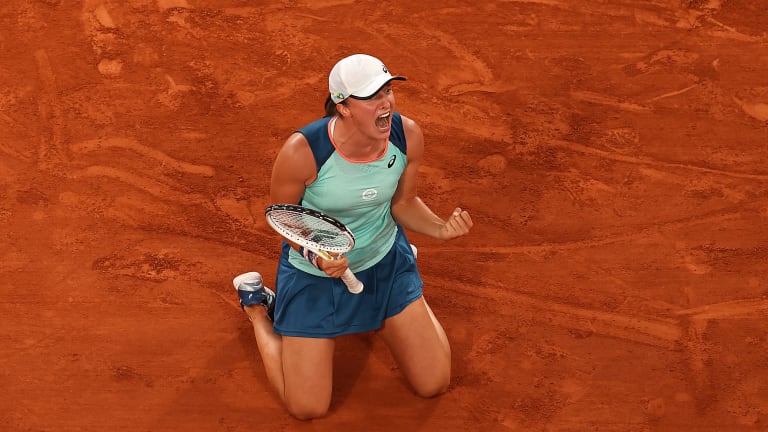Roland Garros
"She's always hitting winners": Six months after trusting her talent like never before, Iga Swiatek is the one setting new standards in ground-stroke prowess
By Jun 04, 2022Roland Garros
Rafael Nadal to be honored with 'exceptional' tribute on opening day of Roland Garros
By Apr 17, 2025Roland Garros
French Open organizers introduce draw to access ticket sales
By Jan 07, 2025Roland Garros
Coaches Corner: Juan Carlos Ferrero proves essential to Carlos Alcaraz's Roland Garros success
By Jun 14, 2024Roland Garros
What’s next for Novak and Nadal? Four ATP storylines after the Paris fortnight
By Jun 10, 2024Roland Garros
Naomi’s resurgence, Iga on grass: Four WTA storylines after the Paris fortnight
By Jun 10, 2024Roland Garros
Carlos Alcaraz becomes the clay-court champion that he—and we—always knew was possible
By Jun 09, 2024Roland Garros
Coco Gauff wins first Grand Slam doubles title with Katerina Siniakova in dream team debut
By Jun 09, 2024Roland Garros
Coco Gauff is a Grand Slam champion in singles and doubles, exceeding her own expectations
By Jun 09, 2024Roland Garros
From Rafa to Iga: as one owner of Roland Garros departs, a new one has moved in
By Jun 08, 2024"She's always hitting winners": Six months after trusting her talent like never before, Iga Swiatek is the one setting new standards in ground-stroke prowess
The now two-time Roland Garros champion once again demonstrated throughout her latest Paris title run if one can hit the ball past people at will, with little risk, there's no reason to do anything else.
Published Jun 04, 2022
Advertising
Advertising

Swiatek conceded a total of 12 games across her quarterfinal, semifinal and final wins.
© Ryan Pierse